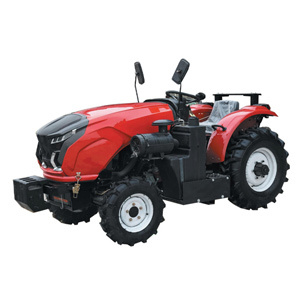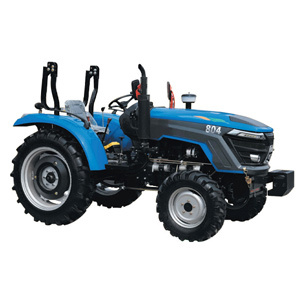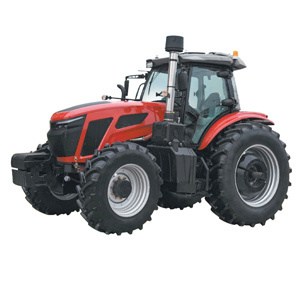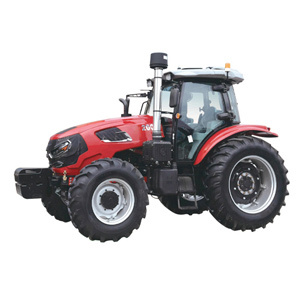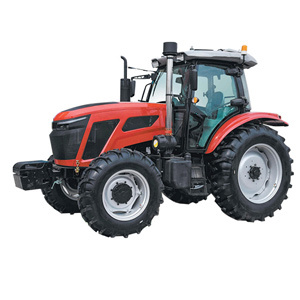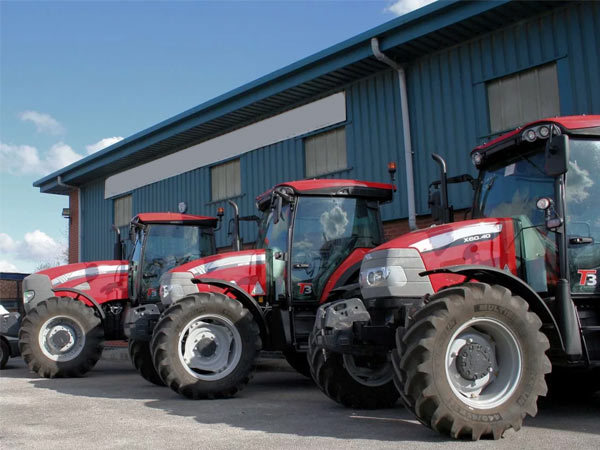Providing you with a one-stop solution for tractors
How to Predict Fuel Consumption from Specifications? Decoding the Data Secrets Behind Tractor "Efficiency & Fuel Savings"
Release time:
2025-11-06
Fuel costs are a relentless drain on farm profitability. While driving habits play a role, a tractor's inherent fuel efficiency is largely determined by its engineering and core specifications. The secret isn't a mystery; it's hidden in plain sight within the technical data sheet. By learning to read these key parameters, you can accurately predict a tractor's thirst for fuel and make an investment that saves you money for years to come.
Secret #1: The Engine - Look Beyond Horsepower to "Specific Fuel Consumption"
Engine horsepower (HP) is a headline figure, but it tells you nothing about efficiency. A 100 HP tractor can be far more efficient than another 100 HP model. The critical metric to find is the Specific Fuel Consumption (SFC) or Brake Specific Fuel Consumption (BSFC).
What It Is: SFC measures the mass of fuel consumed per unit of power produced per hour (e.g., g/kWh). Simply put, it's the engine's "fuel mileage" under load.
How to Decode It:
Lower is Better. A lower SFC value means the engine converts fuel into work more efficiently.
Look for the "Sweet Spot": SFC is not constant; it varies with engine RPM and load. Modern, efficient engines have a wide range of RPM and load where the SFC is at its lowest. Ask the manufacturer or dealer for the SFC map and look for a low value (e.g., around 220-240 g/kWh) across a broad operating range.
The Prediction: An engine optimized for a low and flat SFC curve will sip fuel under partial loads (like transport or light cultivation), whereas an older or less refined design will guzzle it.
Secret #2: The Transmission - The "Efficiency Multiplier"
How power gets from the engine to the wheels is as important as the engine itself. The transmission type is a major predictor of real-world fuel use.
The Hierarchy of Efficiency:
Continuously Variable Transmission (CVT): The gold standard for efficiency. It continuously adjusts the ratio to keep the engine running at its most fuel-efficient RPM (often coinciding with the lowest SFC point) for any given ground speed and load. This eliminates the inefficiency of fixed gear ratios.
Powershift & Semi-Powershift Transmissions: Very good. They allow on-the-go shifting with minimal power loss, enabling the operator to keep the engine in an efficient power band more easily than with a manual gearbox.
Synchronized Manual Transmissions: The baseline. Efficiency depends entirely on the operator's skill in manually matching engine RPM to ground speed. Frequent operation in the wrong gear wastes significant fuel.
The Prediction: For the same engine, a tractor equipped with a CVT will consistently deliver lower average fuel consumption across mixed tasks than one with a manual transmission.
Secret #3: Hydraulics - The "Parasitic Load"
The hydraulic system is essential, but it consumes engine power. An inefficient or oversized system is a constant, hidden fuel drain.
Key Parameters:
Load-Sensing Hydraulics: This is the key technology. A load-sensing system only delivers the flow and pressure required by the implement at that moment. It does not run at constant high pressure.
Fixed-Flow Gear Pumps: Older or basic systems use pumps that constantly produce maximum flow, with excess fluid diverted back to the tank via a relief valve, wasting engine power and fuel.
The Prediction: A tractor specification sheet that highlights "Load-Sensing Hydraulics" indicates a design that minimizes unnecessary hydraulic power loss, directly contributing to lower fuel consumption, especially in operations that frequently use the hydraulics (e.g., loader work).
Secret #4: Weight & Power-to-Weight Ratio - The "Goldilocks Zone"
A tractor must be heavy enough for traction but not so heavy that it wastes fuel moving itself.
The Concept:
Excessive Weight: An overly heavy tractor for its power requires more energy to accelerate and move, increasing rolling resistance and fuel use, especially during transport.
Insufficient Weight: A tractor that's too light for its power will suffer from wheel slip under draft loads, burning fuel to spin wheels instead of moving forward.
The Prediction: Look for a balanced power-to-weight ratio. The "sweet spot" is a tractor with enough structural weight to provide excellent traction for its primary draft tasks without being excessively heavy. This ensures power is used for work, not just locomotion.
Conclusion: Synthesize the Data for an Accurate Forecast
Don't buy a tractor based on horsepower and price alone. To truly predict fuel costs, become a data detective. Scrutinize the spec sheet for:
A low and flat Specific Fuel Consumption (SFC) curve.
An advanced Transmission (CVT or Powershift).
An efficient Load-Sensing Hydraulic system.
A rational Weight that matches the intended power and tasks.
By prioritizing these parameters, you move beyond marketing claims and make a data-driven decision. You're not just buying a tractor; you're investing in a predictable, lower cost of operation for the long haul.
RELATED BLOG

